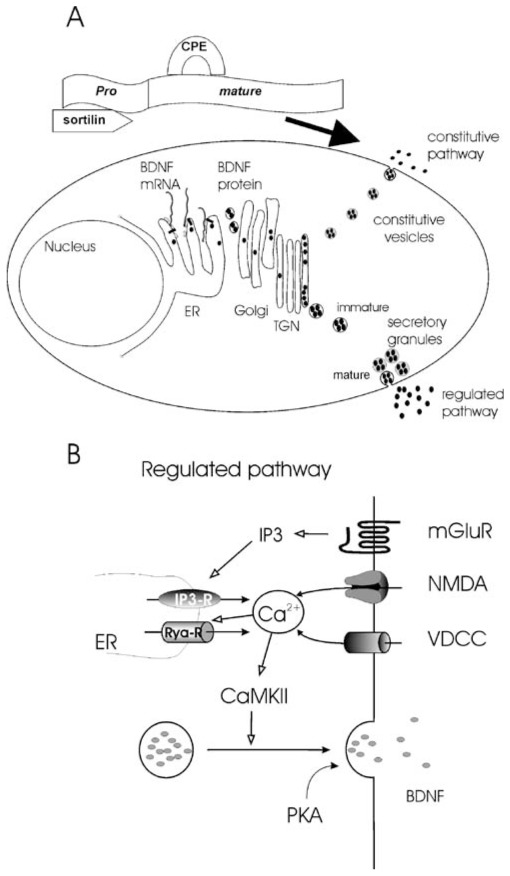Fig. 2.

Synthesis, storage, and release of BDNF. a The pre-pro-BDNF is synthesized and sequestered in the endoplasmic reticulum (ER). Pro-BDNF then transits the Golgi apparatus and accumulates in membrane stacks of the trans-Golgi network. The trans-Golgi network can be thought of as a major protein sorting station inside the cell. At this point, two types of secretory pathways exist. Secretion via the constitutive pathway does not rely on extracellular signals or any triggering events. In the regulated pathway, fusion of the secretory granules with the plasma membrane is triggered by an intracellular rise in Ca2+. The binding of the pro form with sortiline and the mature form with carboxipeptidase E is required to address the pro-BDNF in the regulated pathway (modified from Fig. 2 in [1]; with permission. b Scheme of the signaling involved in postsynaptic regulated BDNF secretion. BDNF secretion required a postsynaptic rise in intracellular Ca2+ concentration. This Ca2+ rise can result from an influx through voltage-dependent Ca2+ channels (VDCCs) or NMDA receptors upon membrane depolarization or from activation of internal Ca2+ stores (IP3-R) following the activation of metabotropic glutamatergic receptors (mGluRs). The initial Ca2+ rise can be amplified by Ca2+-induced Ca2+ secretion via ryanodine receptors (Rya-Rs). Ca2+ activates CaMKII leading to the fusion of the secretory granules. Basal levels of PKA activation “gate” BDNF secretion
